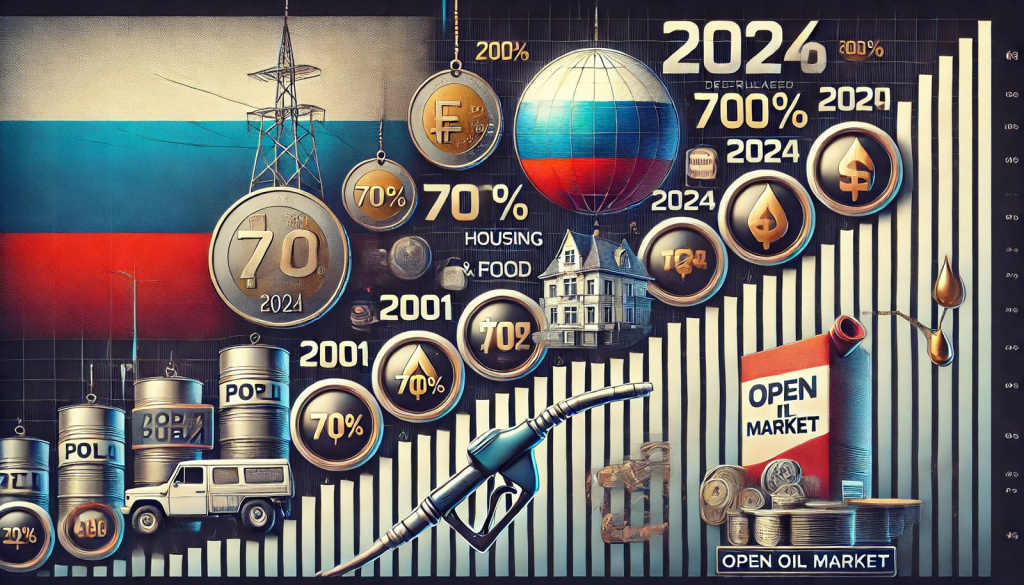Inflation in Russia Since 2001: Changes in Prices and the Ruble Exchange Rate
Since 2001, the inflation rate in Russia has exceeded 700%, with an average annual price increase of 9.1%. During this time, the ruble has significantly weakened against the dollar, while housing, food, and fuel prices have increased multiple times. How has the cost of living in Russia changed over more than two decades, what factors have influenced inflation, and what can we expect in the future?
Key Inflation Indicators Since 2001
-
Average annual inflation: 9.1%.
-
Dollar exchange rate: increased 3.4 times (from 29 rubles to 98 rubles).
-
Housing prices: increased 16 times.
-
Tobacco products: price of a pack of cigarettes increased 27 times.
-
Food products: significant price increase for basic food items.
How Have Prices for Food and Essential Goods Changed?
|
Product |
Price in 2001 (rub.) | Price in 2024 (rub.) | Growth |
| Eggs (dozen) | 19 | 117 | 6.2 times |
| Chicken meat (1 kg) | 57 | 227 | 4 times |
| Butter (200 g) | 14 | 244 | 17.4 times |
| Gasoline AI-95 (1 liter) | 9 | 61 | 6.7 times |
The sharp increase in prices for essential goods can be attributed not only to inflation but also to tax burdens, changes in production and transportation costs, as well as the weakening of the ruble.
What Factors Have Influenced Inflation Growth?
-
Weakening of the Ruble
-
The dollar exchange rate increased 3.4 times over 23 years, leading to higher costs for imported goods and components.
-
-
Rising Raw Material and Energy Prices
-
Domestic prices for oil, gas, and electricity have increased, impacting the cost of goods and services.
-
-
Changes in Tax Policy
-
The introduction and increase of excise taxes on fuel, tobacco, and alcohol have led to significant price increases for these goods.
-
-
Global Economic Crises
-
The crises of 2008, 2014, and 2020 contributed to ruble volatility and accelerated inflation.
-
-
Sanctions and External Pressure
-
Restrictions on the import of goods and technologies have increased production costs, especially in the industrial and food sectors.
-
How Does Inflation Affect the Population?
-
Decline in Real Income: Price growth surpasses wage increases, reducing the purchasing power of the population.
-
Decreased Housing Availability: Real estate prices are rising faster than income, complicating apartment purchases.
-
Increased Credit Burden: Inflation makes long-term loans more expensive, increasing financial pressure on households.
Future Outlook
Economists predict that inflation will remain at 6-8% per year in the coming years, which is above the Central Bank's target indicator. The main factors determining inflation trends include:
-
Dynamics of the ruble and foreign trade policy.
-
Prices for oil and energy resources.
-
Government regulation of tariffs and taxes.
Since 2001, inflation in Russia has exceeded 700%, affecting all key sectors of the economy. Despite market adaptation, the decline in purchasing power remains a significant issue for the population. The future of inflation will depend on macroeconomic policy, the situation in global markets, and the state of the national currency.




